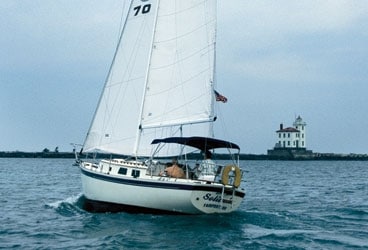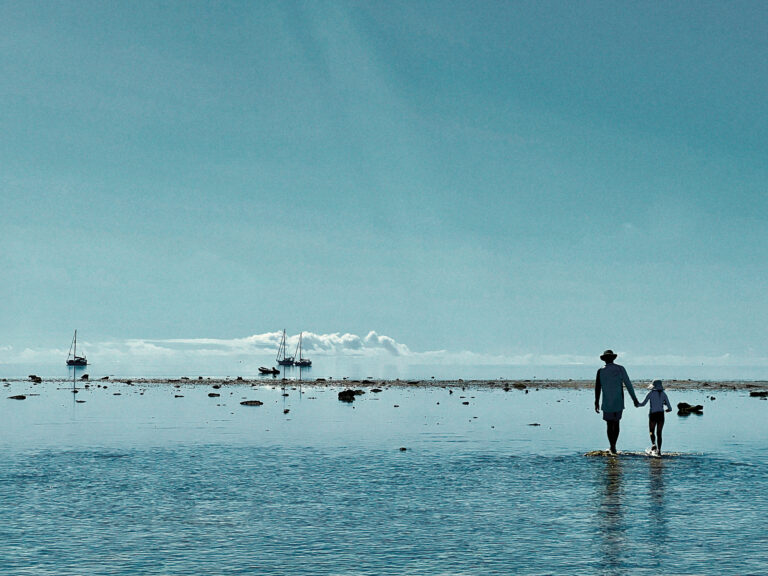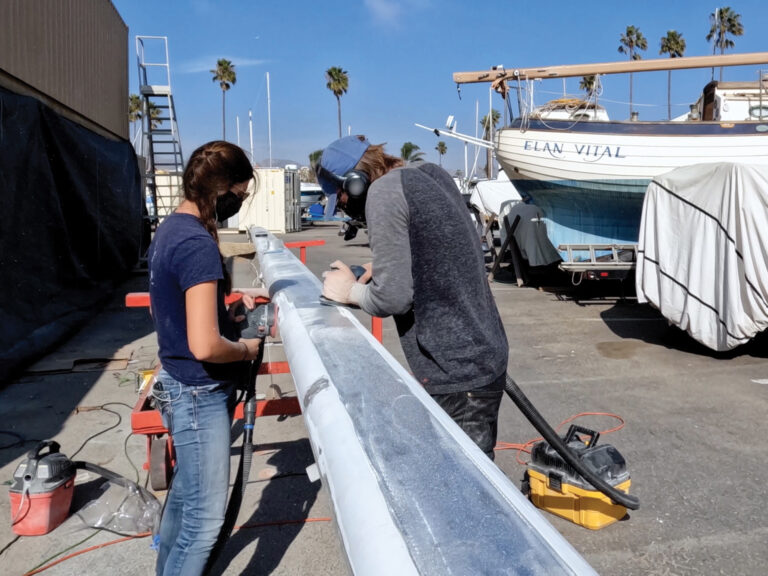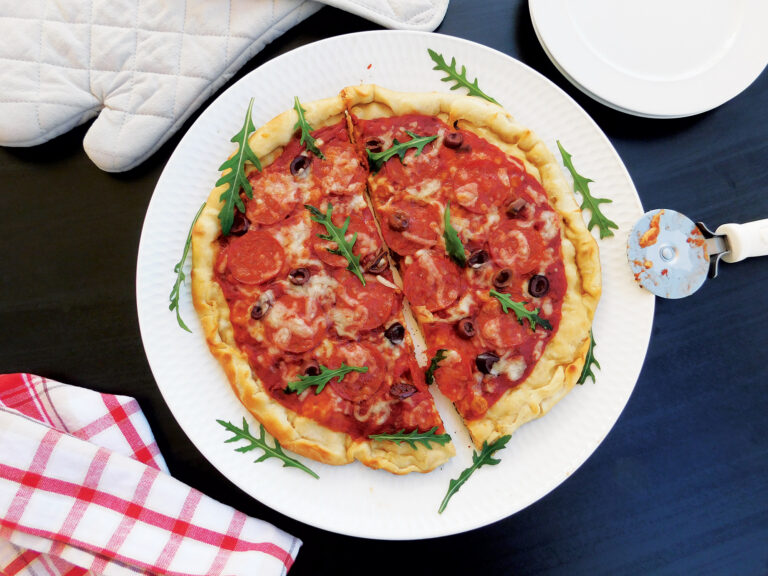
Aloha 32 368
Ti Ouyang started Ouyang Boat Works in Whitby, Ontario, in the late 1960s. In the 1970s, he contracted several naval architects to contribute designs for the company’s new line of Aloha cruising boats. Ouyang selected a submission from Mark Ellis for the Aloha 32, which was introduced in 1979 and continued in production until 1988, by which time the company had built approximately 700 boats.
To give the Aloha 32 its classic “yachty” look, Ellis drew a strong, springy sheer, a delicate spoon bow, and a raked transom with a slight overhang. Aesthetically, the short bowsprit serves to extend the sheer line; technically, it lengthens the foretriangle to compensate for the somewhat forward placement of the fin keel. The wide cove stripe accentuates the sheer, and the teak trim along the cabin top visually reduces the cabin’s height.
The hull is solid fiberglass, and the deck is cored with end-grain balsa. The deck fits hatbox fashion to the hull and also lands on an inward flange on the hull, where it’s chemically bonded and bolted on 4-inch centers.
The Aloha 32 was available in two interior configurations. One setup offers a traditional V-berth cabin and a saloon with opposing settees. In the other arrangement, a workshop, sail bins, and stowage replace the V-berth. This “all-business” space is separated from the main saloon by a pair of hanging lockers. In the saloon, opposing settee berths flank a centerline drop-leaf table. Both configurations include a generous head compartment with a shower and a wet locker and an L-shaped galley with a sink, a propane stove with an oven, and a well-insulated icebox.
The Aloha 32’s keel-stepped mast supports a high-aspect-ratio masthead sloop rig. All sail controls lead aft so the sails can be handled from the safety of the cockpit. In lieu of a traveler, two main sheets are fitted in an inverted-V arrangement, with one sheet cleated on either side of the companionway hatch.
The Aloha 32 is light, so it accelerates well, and its tall rig helps it move along in light air. In heavy air, the mainsail should be reefed early. With properly shortened sails, the boat sails on its feet, at or near its hull speed of 6.7 knots.
For auxiliary power, the Aloha 32 originally relied on a two-cylinder, 16-horsepower Atomic diesel. In 1985, there was a switch to the more powerful three-cylinder, 21-horsepower Westerbeke diesel, which is able to push the boat along close to its hull speed.
Anyone considering an Aloha 32 should check for loose aft keel bolts, reportedly a result of bilgewater degrading some of the steel structural components. The wooden chainplate knees are also subject to rot.
The Aloha 32 is a comfortable, traditionally styled cruising sailboat. The boat is a little light for serious bluewater work, but it’s more than adequate for coastal cruising and that escape you’re planning to the Bahamas. Condition is everything, but expect to pay between $30,000 and $45,000.
Specs
Aloha 32
LOA 32′ 5″ (9.91 m.)
LWL 25′ 0″ (7.62 m.)
Beam 10′ 10″ (3.30 m.)
Draft 4′ 9″ (1.45 m.)
Sail Area (100%) 518 sq. ft. (48.1 sq. m.)
Ballast 4,000 lb. (1,814 kg.)
Displacement 9,800 lb. (4,444 kg.)
Ballast/D .41
D/L 280
SA/D 18.1
Water 60 gal. (273 l.)
Fuel 20 gal. (91 l.)
Engine 21-hp. Westerbeke diesel
Designer Mark Ellis
Gregg Nestor, the author of three books about sailboats, has enjoyed a lifelong interest in all things aquatic.








